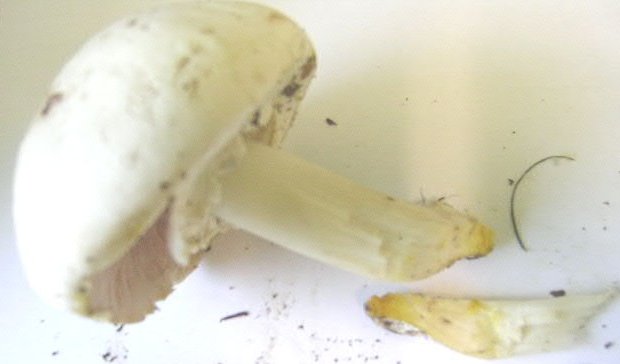
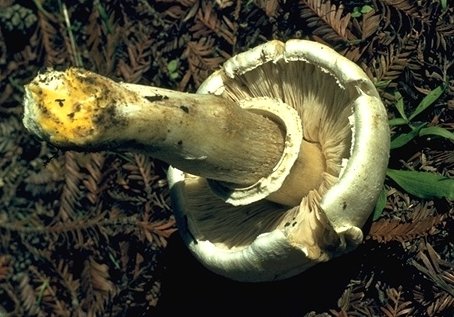
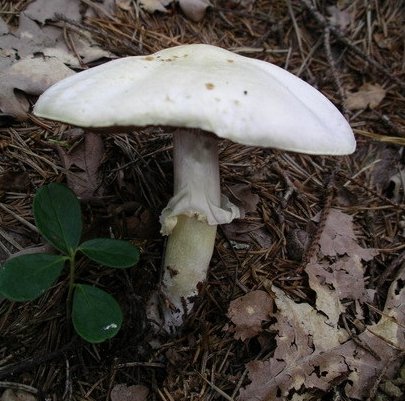
Classification
Kingdom Fungi
Phylum Basidiomycota
Class Basidiomycetes
Order Agaricales
Family Agaricaceae
Genus Agaricus
Synonyms
Agaricus meleagris var. grisea (A. Pearson) Wasser
Ukr. bot. Zh. 35(5): 516 (1978)
Agaricus pseudocretaceus Bon
Docums Mycol. 15(no. 60): 34 (1985)
Agaricus xanthodermus var. griseus (A. Pearson) Bon & Cappelli
Docums Mycol. 13(no. 52): 16 (1983)
Agaricus xanthodermus var. lepiotoides Maire
(1911)
Agaricus xanthodermus Genev.
Bull. Soc. bot. Fr. 23: 28 (1876) var. xanthodermus
Pratella xanthoderma (Genev.) Gillet
Champignons de France. Tableaux Analytiques des Hyménomycétes (Alençon): 129 (1884)
Psalliota flavescens Richon & Roze
(1888)
Psalliota xanthoderma (Genev.) Richon & Roze
53 (1885)
Psalliota xanthoderma var. grisea A. Pearson
Trans. Br. mycol. Soc. 29(4): 204 (1946)
Psalliota xanthoderma var. lepiotoides (Maire) Rea
Brit. basidiomyc. (Cambridge): 85 (1922)
Common names
Yellow stainer
Agaric jaunissant, Psalliote jaunissante (French)
Prataiolo – Falso prataiolo (Italian)
Karbolchampignon (German)
Pieczarka karbolowa (Polish)
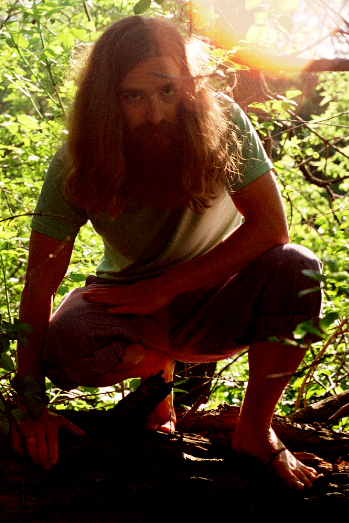
My name is Austin Collins.
I've dedicated my life to Mushrooms.
I believe Mushrooms are the best kept secret when it comes to health and well being.
For that reason, I would like to share a company with you that in my opinion makes the best mushroom products on the market.
The company is called Noomadic Herbals, my favorite supplement they make is called "Mushroom Total".
I take their products every day and they have helped me think better and have more energy. Give them a try.
-Austin
Description
Cap: usually 6-10 cm diameter (up to 15 cm). It is initially convex, with some young specimens having a squarish shape, though flattening with age. It is whitish, with light brown tints towards the center. The cap is dry and smooth, but can be scaly when old. The gills of this mushroom progress from pale-pink to a chocolate color.
Spore print: brown.
Stem: bulbous with a skirt-like ring. Microscopically, there are club-shaped cheilocystidia.
Spores: 6-7 × 3-4 µm.
Agaricus xanthodermus looks similar to the field mushroom (Agaricus campestris), but when the surface of the cap or stem is scraped it stains a distinct yellow colour. With time, the yellow stain fades to dull brown. Also, it has an ‘inky’ (phenolic) smell that is stronger at the base of the stem. Upon cooking the odor becomes more pronounced. Treatment of this mushroom with potassium hydroxide (KOH) turns the flesh orange-yellow.
Toxicity
Agaricus xanthodermus is one of the most commonly ingested poisonous mushrooms (Hender et al., 2000). If eaten, symptoms may include abdominal cramps, nausea, vomiting and diarrhea. Less common symptoms include headache, dizziness, sweating and drowsiness. It should be noted that some people haven eaten this species without apparent ill effects.
Also, A. xanthodermus contains a molecule, 4,4′-dihydroxy-azobenzene, that in high doses, is carcinogenic to mice. At lower concentrations, however, the azo compound does not have tumor-inducing effects (Toth et al., 1989).
Although other edible Agaricus species, such as A. augustus, A. arvensisand A. silvicola, turn yellow to a greater or lesser extent, they do not display such an intense reaction as A. xanthodermus. This species is commonly found in grass under trees or in parks, but seldom in deep forest (Kerrigan et al., 2005). It is found in North America, Europe, and Africa.
Bioactive compounds
A number of chemicals have been extracted from Agaricus xanthodermus, including:
- 4,4′-dihydroxy-azobenzene
- p-quinol
- 4,4′-dihydroxybiphenyl
- phenol
The concentration of phenol in the fruitbodies was found to be high enough to account for the toxicity of the mushrooms (Gill and Stauch, 1984).
Elemental composition
The levels of calcium, magnesium, iron, manganese, lead, chromium and cadmium in Agaricus xanthodermus was determined in a South African study. Agaricus xanthodermus had Ca (204), Mg (660), Fe (306), Mn (30), Cr (16.2), Pb (50.6) and Cd (29.5) mg/kg by dry weight (Jonnalagadda et al., 2006). The relatively high cadmium concentration corroborates a previous study that reported high cadmium in this species (Yesil et al., 2004)
Psalliotin, the antibiotic found in A. xanthoderma, is light sensitive (Atkinson, 1954). It was later shown that work-up of the methanolic extract in the presence of sodium sulfite yielded the compound agaricin, which has strong antibiotic and cancerostatic properties (K. Dornberger, W. Gutsche, R. Horschak, A. Zureck, Z. Ally. Mikrubiol. 18 (1978) 647; K. Dornberger, H. Lich, C. Schonfeld, H. Knoll, DDRPat. 132878 (15. Nov. 1978); Chem. Abstr. 91 (1979) P 87622e.). The structures of compounds responsible for the antibiotic activity and the yellow discoloration of the fungus were later determined (Hilbig et al., 1985):
“When 3 is dissolved in water and treated with sodium hydrogen carbonate the solution immediately turns yellow in color on being exposed to air. Oxidation proceeds especially smoothly upon addition of sodium periodate: 1 can be recovered by extraction with ethyl acetate; it is identical in all respects with the yellow pigment from A. xanthoderma. It can therefore be assumed that the toadstool contains leucoagaricone 3 which is oxidized to 1 by atmospheric oxygen (oxidases) when the fruiting body is damaged.”
Links
The following sites all have something interesting or useful to say or show about the yellow stainer:
California fungi
Mushroom Expert
Wikipedia
Bioimages (several pictures)
Atkinson N. Psalliotin, the antibiotic of Psalliota xanthoderma. Nature. 1954 174(4430):598.
Dornberger K, Ihn W, Schade W, Tresselt D, Zureck A, Radics L. Antibiotics from basidiomycetes – 4-hydroxybenzenediazonium ion, an antibiotically active metabolite of the basidiomycete Agaricus xanthodermus-Genevier. Pharmazie. 1987 42(3):212-.


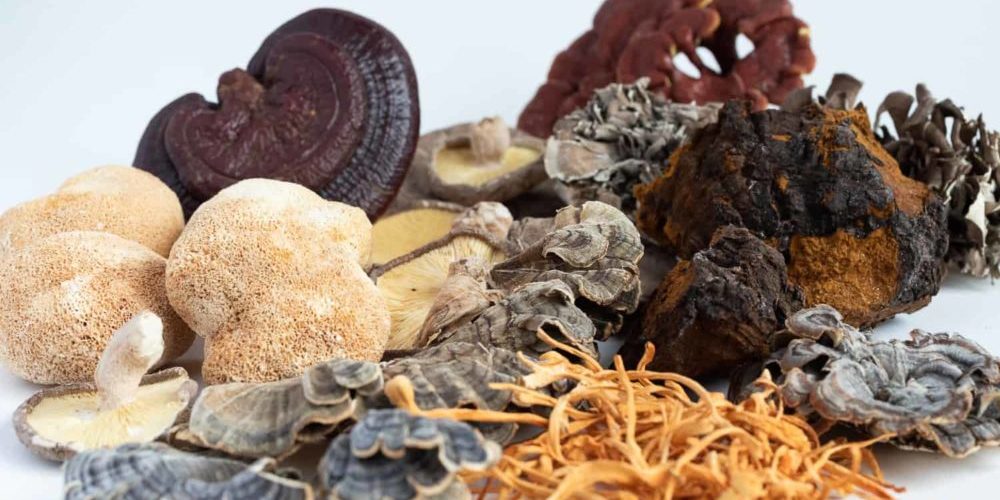

I expect you are very busy in the forest right now but perhaps you can help.
In Pyreneean foothills last week: mushroom ‘identical’ to Ag. Xanthodermus found in a row in grass at tree roots. Did NOT stain yellow anywhere, had a blocky head when young, very thick soft veil, skimpy ring, smooth stem tapered at cap junction. Didn’t do microscopy. Chopped and cooked them, turned very slightly straw-coloured. Meal went down as normal no problems. Next day leftovers in a very small amount produced nausea and vomiting. I’m sure they are still growing. Any ideas? all the best Maggie
This is why I hate online mushroom identification 🙂
It’s really, hard to say without physically seeing the mushroom but to me it sounds like you ate Agaricus xanthodermus. There is a reason it is the most commonly eaten poisonous mushrooms!